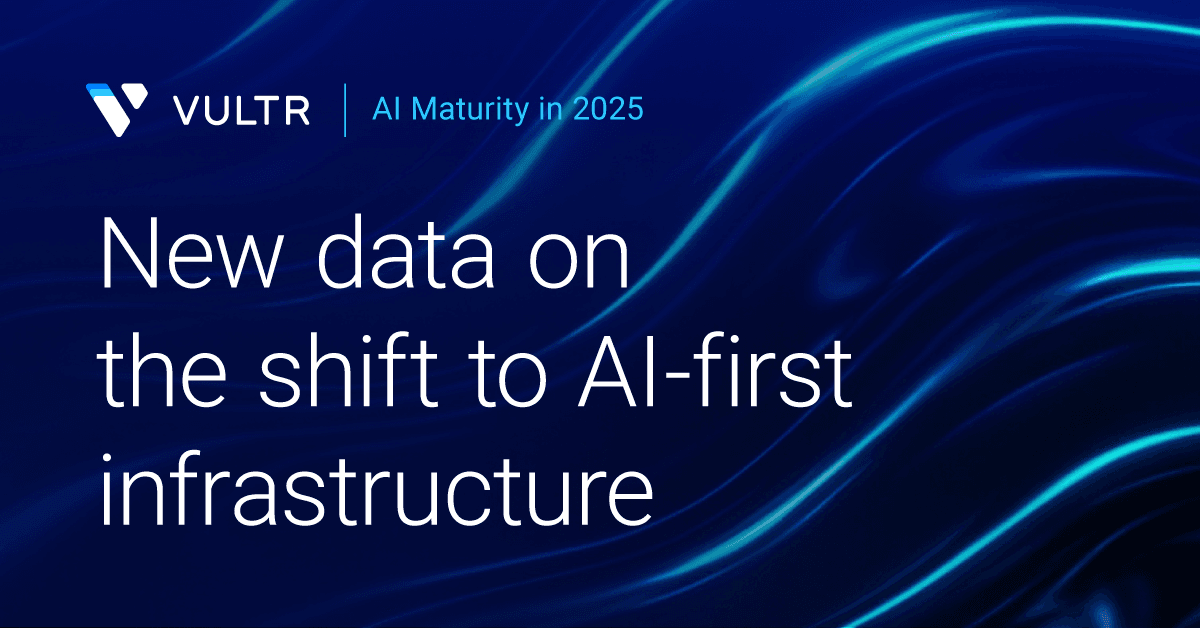AI adoption is booming, but adoption alone isn’t enough. What differentiates today’s high-performing enterprises is AI maturity.
In our second annual AI maturity report, Navigating the Path to AI Success, we teamed up with S&P Global Market Intelligence to explore what the most mature AI organizations are doing differently and why it matters.
Here’s what we learned from 2,000+ executives across 12 countries: the organizations leading the pack aren’t just dabbling in AI. They’re scaling it and aligning their infrastructure to support it. And the results speak for themselves.
How the study was conducted
This year’s study combined a quantitative survey of 2,003 senior decision-makers with qualitative interviews across various industries, including financial services, healthcare, manufacturing, retail, and media. Respondents weren’t just tech-curious; 82% are directly responsible for their company’s AI strategy. In other words, this is insight from the front lines.
The three stages of AI maturity
To make sense of where organizations stand, we classified them into three tiers of AI maturity:
- Operational: The organization has begun adopting AI into its daily operations.
- Accelerated: The organization has adopted AI into many day-to-day functions and continuously seeks new use cases.
- Transformational: The organization has built AI into the business's fundamental aspects and almost all day-to-day functions.
Most respondents (80%) landed in the Accelerated or Transformational tiers, signaling that AI isn’t just experimental anymore; it’s becoming foundational.
Significant gains for the most mature organizations
One of the report's most striking findings is just how closely AI maturity correlates with business performance. Among Transformational organizations, 81% reported better or significantly better financial outcomes than the previous year. That’s a full 25 percentage points higher than their Operational-stage peers. These AI leaders also saw outsized improvements in customer satisfaction and market share.
Where the money is going
AI maturity isn’t happening by accident. It’s backed by strategic investment, particularly in cloud infrastructure. The study found that 63% of Transformational organizations now allocate more than 41% of their annual IT budget to cloud resources. That figure is pushing the enterprise-wide average toward 43% in 2025.
For many, this represents a sharp increase in spending. One technology leader interviewed described a 30% budget jump in a year to support moving AI initiatives from proof-of-concept into production. It’s clear that capital is following the workloads, and those workloads are increasingly AI-driven.
Scaling with model diversity
Another hallmark of AI maturity is how organizations build and deploy their models. Leading companies take a multi-model approach, choosing the right tool for each task. Transformational organizations are running 29% more distinct AI models than their Operational counterparts and have increased their total model count by 24% year over year.
Open-source models are playing a significant role in this shift. Over two-thirds of Transformational respondents (67%) now customize open models to fit their needs, allowing them to fine-tune performance and adapt quickly to changing requirements. Meanwhile, less mature organizations are more reliant on out-of-the-box cloud AI services.
Infrastructure bottlenecks and the edge challenge
Despite their progress, even the most mature organizations face friction. Scaling AI isn’t as simple as flipping a switch, especially regarding inference workloads. The report identified several key constraints slowing down AI at scale, including GPU availability and performance, real-time inference compute limitations, storage throughput, and compliance constraints.
These challenges become especially pronounced as more inference tasks move outside the data center and toward the edge, whether a factory floor, a retail store, or a logistics hub. Enterprise AI infrastructure now needs to support low-latency, high-throughput inferencing across geographically distributed locations, and many organizations are finding that traditional environments simply weren’t designed for it.
The shift away from hyperscalers
Many enterprises are rethinking their cloud strategies in response to these infrastructure hurdles. One of the most critical findings in the report is a decisive pivot away from hyperscale cloud providers. Just 18% of respondents said they plan to build their next-generation AI projects with hyperscalers. Meanwhile, 30% intend to partner with neocloud providers, which are purpose-built for flexible, AI-first infrastructure.
The selection criteria for transformational organizations are shifting. They now place the highest value on financial stability, support for open AI ecosystems, robust security and compliance, and pricing transparency. This trend points to a growing desire for open platforms optimized for AI, not just general-purpose compute.
Why the right partner matters
Study respondents highlighted several obstacles to achieving the next stage of AI maturity. The top three challenges identified as “very significant” or “extremely significant” were a lack of skilled personnel, a scarcity of tools, a lack of expertise in addressing security and compliance concerns, and difficulty finding and hiring AI talent.
The report concludes that organizations can advance along the AI maturity curve by leveraging experienced partners to acquire or access new infrastructure, tools, personnel, and expertise.
As the world’s largest privately-held cloud infrastructure company, Vultr is uniquely positioned to help organizations reach the transformational stage of AI maturity. Our platform is designed for flexibility and performance, with GPU-powered compute options, edge-ready environments, and full support for open-source and multi-model AI development.
Download a full copy of the report here.
Contact our sales team to learn how Vultr helps the AI-aspiring become AI powerhouses.

